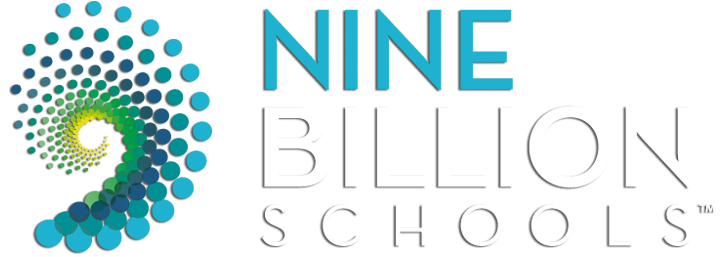9 Billion Schools: One School’s Journey – Persona Development
Our futurecasting exercise with Mercy McAuley High School set out to help the transition team imagine what their new school will look like 10 years from now and to determine what steps they must take to realize that future. After presentations from various stakeholders on issues impacting the future of education, the group participated in a persona development exercise.
What is persona development?
In futurecasting, the goal of developing personas is to imagine who, in 10 years’ time, will be impacted by decisions being made today. If you were designing a new vacuum, for instance, you’d think through all the potential buyers of your new product, assign them specific characteristics and develop specific tactics to encourage a purchase. The same process is true when developing personas during futurecasting. But in this exercise, participants are asked to examine the predictions they heard from industry experts, and apply how those trends might impact or change the audience they’re trying to reach. Persona development helps educators recognize student needs and gaps in school support that they may not have thought of before.
For Mercy McAuley’s transition team, that meant thinking through the kinds of students the high school might serve in 2027—again, based on the research inputs presented by Brian David Johnson, Amy Hanson, Chris Nicak and others—to brainstorm ways Mercy McAuley can and should adjust to each student’s needs. The exercise is rooted in 9 Billion Schools’ dedication to personalized learning—each persona the transition team developed had a different background and unique worldview, and the team was tasked with determining ways to support each individual learner.
Although the personas were detailed and diverse, multiple themes and common characteristics emerged. These repeated suggestions are concrete ideas Mercy McAuley can implement to support a variety of their students.
To begin the exercise, the transition team broke into smaller groups tasked with creating their own persona. Each team was offered a set of prompts and questions to answer when developing their student persona:
- Who is she? What is her name? How old is she?
- How will she hear about Mercy McAuley?
- Where is she coming from (part of the city, socioeconomic, cultural and religious background?)
- What types of training, outreach and support do teachers need to best serve this student?
- What will the student’s initial experience be when she comes to school for the first time?
- How can we build a faculty and staff willing and able to assist this student in becoming a lifelong learner?
- What programs, training and services will this student need to be successful? What ecosystem support is needed?
- What type of experience do we want her to have? What barriers exist to creating this experience?
- What type of experience do we want to avoid?
As I’ve mentioned in previous posts, Mercy McAuley is an all-girls, Catholic high school. So it was interesting to observe the differences between the students the existing schools serve, and the personas they imagined walking through the doors of the new high school 10 years from now. Future Mercy McAuley recruits and attendees were envisioned from a variety of cultural, religious and socioeconomic backgrounds and from different parts of the city—diversity that doesn’t exist as much in the schools today. The exercise demonstrated that Mercy McAuley staff recognized the need to branch out from the traditional geographies to recruit students from different parts of the city and from more diverse backgrounds. As you may remember from Christopher Nicak’s presentation on economics, the population of Cincinnati’s west side, where Mercy McAuley is located, is expected to remain relatively stagnant over the next decade. To increase enrollment, Mercy McAuley needs to draw students from outside its traditional neighborhoods. The desire to reach new students made the persona exercise particularly valuable for Mercy McAuley’s transition team because it forced them to consider new support systems the school may need to successfully recruit and retain different students.
For example, one of the personas developed was an incoming freshman named Rachel. She was imagined to be coming from a public school in Fairfield, a Cincinnati suburb about 25 minutes away from Mercy McAuley. Her family is Catholic, but they aren’t practicing, and her family doesn’t put a high priority on education. Rachel has a learning disability and dreams of being the first person in her family to go to college, but isn’t sure if she’ll be able to.
This persona generated debate among the group. Would transportation to and from school be an issue for Rachel since she lives far away? Will it hinder her ability to participate in after-school activities? The group considered ways the school might assist with transportation, like developing a school-wide carpool system. They also discussed ways to make after-school curriculars more accessible, like finding time for clubs to meet during the school day or making club meetings available virtually. On top of transportation issues, the group considered ways to support Rachel academically, since she has a learning disability, and her parents are not college-educated and may not be able to help her apply to college because they aren’t familiar with the process. And while a student exactly like Rachel may not come to Mercy McAuley in the next few years, the schools is sure to encounter students traveling from further away neighborhoods, students with learning disabilities, and students who will be the first in their family to go to college.
Any educational institution can use persona development to take a closer look at their students and consider new ways to support them throughout their educational journey. Persona development is a critical element of educational futurecasting because schools must imagine the types of students they’ll have in 10 years, in order to make important decisions today. In the end, everything the school does is to support students, but if they don’t understand their future students’ needs, how will the school successfully recruit, retain and educate students in the future?
Demographics are shifting in many areas across the country. Few schools are likely to have the exact same student makeup in 10 years that they do right now. Considering the types of students they want to attract can help schools examine whether or not they are offering the necessary support systems. And, if not, how they can work to implement those systems in the coming years.
During our two-day futurecasting exercise with the new high school, speakers presented to the transition team on a variety of issues impacting the future of education including the speed of technological changes and business trends, economics, students’ perspective on personalized learning, educational trends, and facility design trends. The persona development exercise was the last step in our futurecasting session. This post ends our One School’s Journey series about our work with Mercy McAuley.
If you have any questions about futurecasting or would like to learn more about our work with Mercy McAuley, let us know in the comments or reach out to us on social media through Facebook or Twitter.






